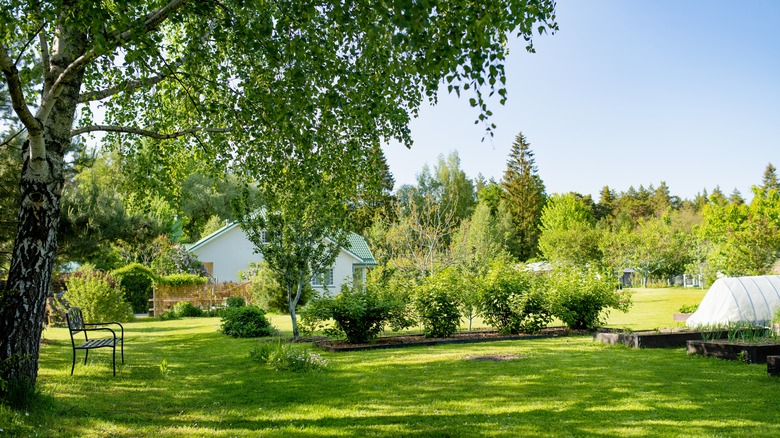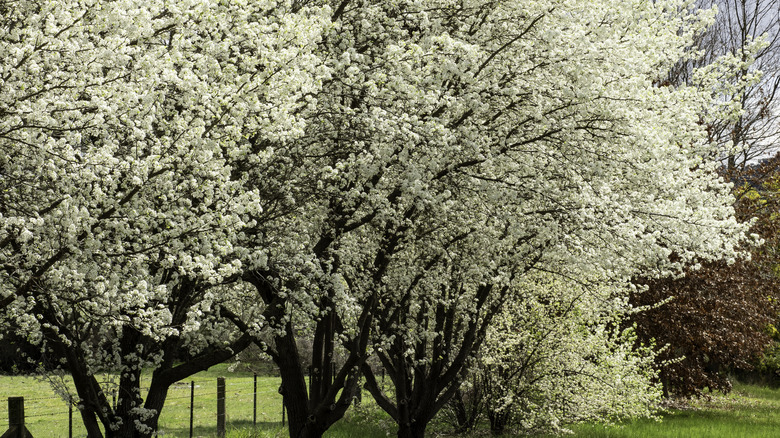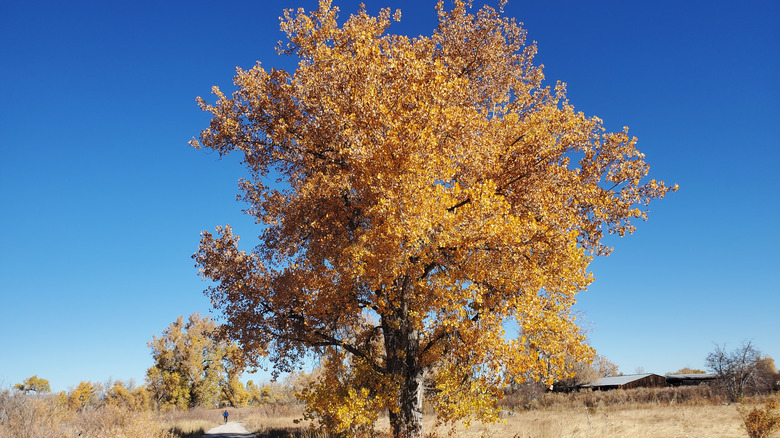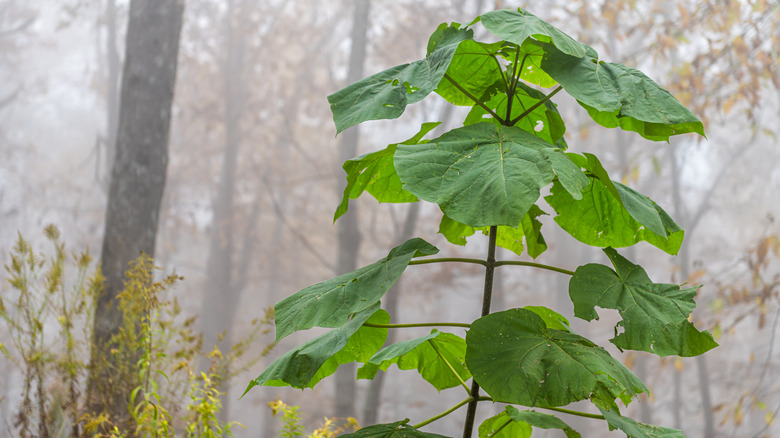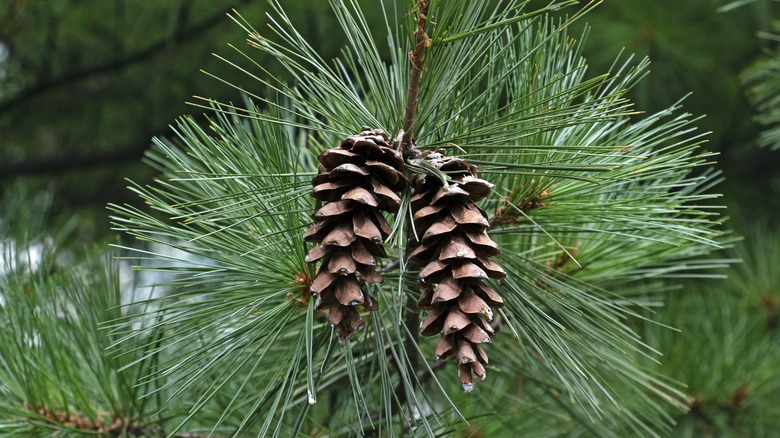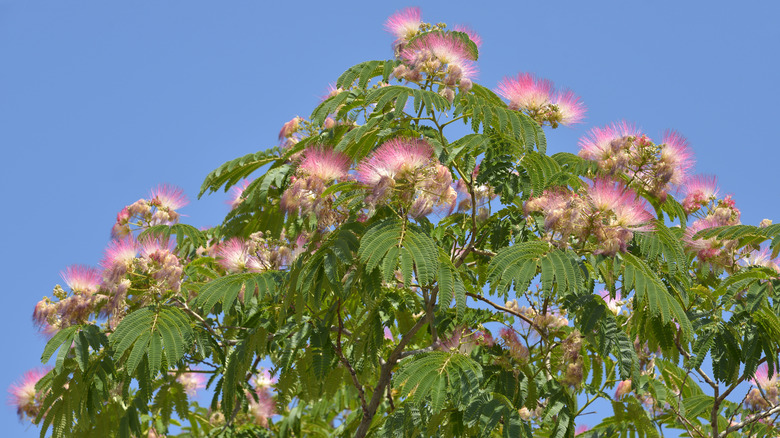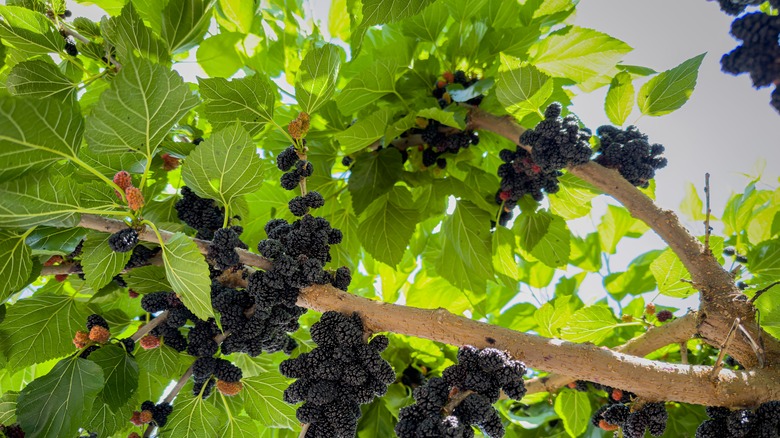Fast-Growing Trees You Don't Want To Plant In Your Yard (& 6 Better Alternatives)
Fast-growing trees can be a blessing and a curse. On the one hand, they are ideal to plant for privacy in your yard on a relatively short timeline, and some can even be used in special tree-growing techniques to form a living hedge or wall. Many such trees can also offer shade and shelter for local wildlife within your yard. But, on the other hand, certain fast-growing trees can quickly take over your outdoor space, dwarfing other vegetation in your landscape and brushing up against power lines, particularly in homes with smaller yards. When it comes to adding trees to your yard, you may want to think twice before planting certain varieties.
What makes some fast-growing trees more difficult to manage than others? For starters, some fast-growing trees have short lifespans once they reach full height, and may have weaker wood than sturdier, slower-growing varieties. Others are particularly prone to insects or blights, making them a risky investment long-term. Still others will grow too well in your area, and may even be invasive, choking out other vegetation in your yard and spreading beyond their intended area. Luckily, most popular fast-growing trees have viable alternatives that avoid these pesky problems — check out our choices below.
Bradford pear trees
Bradford pear trees may look like an ideal ornamental tree at first glance, given their beautiful white flowers in the spring. But a closer look — or should we say smell? — reveals some troubling downsides to this choice for your garden. Not only are these flowering trees invasive to the U.S., but they come with an unpleasant odor that's been likened to rotting fish, old cheese, and baby poop. That's hardly the aroma you'd like to cultivate for your next garden party. But even if the smell doesn't put you off of the Bradford pear, it's weak wood might: Because of the way this tree's branches quickly grow, they are prone to snapping off, making for lopsided, unsightly trees. These qualities, combined with their tendency to choke out native plants, make the Bradford pear a less than ideal choice for ornamental planting.
If you're looking for similar white blooms in your landscape, consider instead the fringe tree. This tree's long, delicate flowers resemble fringed pom-poms in stunning bloom, and they carry a sweet fragrance to boot. The fringe tree is native to the U.S. and boasts sturdy branches, unlike the Bradford pear. Though it won't grow as quickly as the Bradford pear, the fringe tree has a much longer lifespan — 50–150 years compared to the Bradford pear's 15 — so it will pay off year after year.
Cottonwood trees
Cottonwood trees can grow up to 6 feet a year and reach 100 feet tall, but their quick growth rate comes at the cost of stability. The fast growth of these trees makes their branches and wood brittle, meaning they're prone to breakage when storms or high winds strike and therefore could damage to your home and yard. Cottonwoods also live up to their name, producing sticky, fluffy seed clusters that spread over lawns and exterior home surfaces. Many homeowners find the fluffy cotton of these trees a nuisance and an eyesore. The cotton is also quite flammable, and may introduce a fire hazard in drier climates. On top of these maintenance challenges, homeowners might find the abundant pests that snack on cottonwoods (including aphids and mealybugs) to be a final straw in making these trees more trouble than they're worth.
Cottonwoods are often selected as shade trees due to their quick growth, but given the many problems associated with that growth, an alternative shade tree might be a better choice. One tree that provides ample shade, but grows slowly, is the yellowwood tree. Yellowwoods are hardwoods that grow umbrella-like canopies perfect for adding shade to your yard. Heavy snow may occasionally cause their branches to break, but since they reach a height of 30-50 feet, rather than 100, yellowwoods risk much less damage than cottonwoods. Plus, yellowwoods come with few pest problems and can tolerate a wide range of soil pH. Fans of the pops of white cottonwoods add to a landscape will enjoy the hanging white blooms of the yellowwood in springtime.
Empress trees
Empress trees provide ample shade, given their large leaves, and they sport fragrant flowers in the springtime. But empress trees also fall into the invasive category of fast-growing trees, propagating quickly and towering over other plants. These trees can often be spotted growing between cracks in the pavement and gutters, making them perhaps too adept at self-propagating; any empress trees you'd plant intentionally in your yard would quickly self-sow elsewhere around your home. Like other fast-growing trees, the empress tree has weak wood prone to breakage, making its utility as an ornamental planting somewhat variable.
For a U.S.-native tree that sports similar large leaves, as well as gorgeous white flowers, try the bigleaf magnolia. This tree's leaves can be up to 3 feet long and 1 foot wide given the proper space and sunlight — its flowers and leaves are the largest of any species native to North America. As a bonus, the bigleaf magnolia also has few risk factors when it comes to disease or pests.
White pine trees
White pines grow both tall and wide and sport elegant, spindly needles. While beautiful (and popular in landscaping), these evergreens bear cautious consideration before planting due to the many afflictions they are susceptible to. Among these are white pine decline, which causes yellowing and browning of their needles and oozing sap, as well as white pine blister rust, a deadly fungus that forms large, weeping cankers on the trees. White pines are also vulnerable to air pollution and environmental damage from ice and wind, and they're a favorite of many pests, including bagworms, weevils, borers, and moths.
If you're seeking an evergreen that's a bit tougher than the white pine, spruce trees may be a good option. Spruce cultivars typically retain their lower foliage when used in privacy screens, whereas white pines drop their lower needles and branches over time. Spruces rival white pines in terms of winter aesthetics, too: Both evergreens are top choices for Christmas trees.
Mimosa trees
Mimosa trees are among the many striking, fast-growing ornamentals that also happen to be invasive to the U.S. It's hard to resist their delicate, fern-like leaves and eye-catching, fuzzy pink blooms, but these trees have a helping of each of the common problems we've seen from other tree species on this list. Mimosa tree wood is weak and prone to breaking, and they are susceptible to web worms and wilting. Additionally, they spread prolifically and threaten native vegetation, and drop copious amounts of seed and leaf litter in yards.
You'll have better luck with a tree like redbud if you're seeking beautiful pinkish blooms in the springtime. Redbuds are also fast-growing ornamentals, but they are native to the U.S. and pose significantly less danger to surrounding flora and fauna. Although insects and wilt can also cause problems for redbuds, deer tend to avoid them, and their flowers will draw pollinators, such as hummingbirds and songbirds, to your yard. Most importantly, redbuds do not self-sow as rampantly as mimosas, and their self-propagation is rarely problematic.
Mulberry trees
Both white and red mulberry tree varieties produce edible fruit that may draw birds to your yard, but some people find the red mulberry's fruit especially vexing, as it is messy and stains surfaces. Although they are easy to grow, mulberries can bring more problems to your yard than fruit stains alone: In addition to desirable visitors like birds, mulberries can attract borers, scale, and mites, and they are susceptible to diseases, such as bacterial blight, mildew, and root rot. Mulberry trees also suffer from the weak wood of other fast-growing trees, and their seedlings tend to spread in a weed-like manner. Though mulberry seedlings can be pulled by hand, some homeowners may find the upkeep of their yards reason enough to avoid mulberry trees.
Hackberry trees can fill the niche that mulberry trees otherwise would. Hackberries also produce edible fruit that draws birds and wildlife to one's yard, but they retain their fruit on their branches until wintertime. Hackberry trees became popular replacements for elms with the spread of Dutch elm disease in the U.S., as they are not vulnerable to the disease. They grow easily in a variety of soils and are fairly resistant to ice, heat, and drought damage, too, making them an attractive option for a home gardener.
